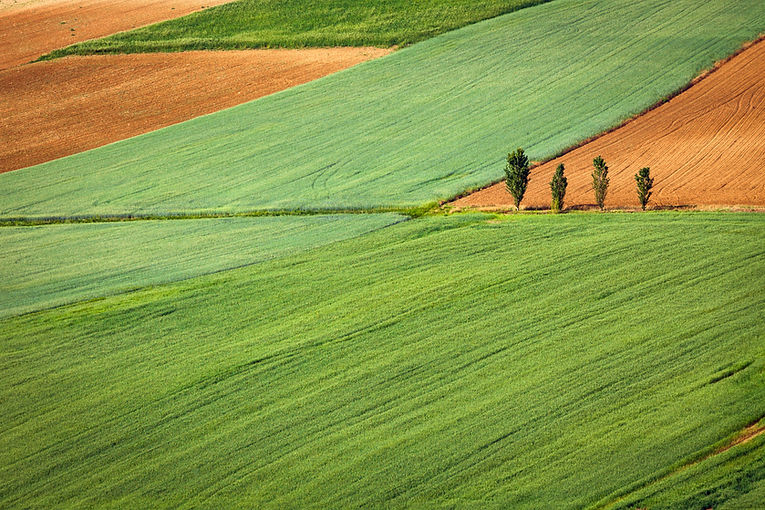Improving the accuracy of information extracted from drone imagery for fruit tree management
- Adriaan van Niekerk
- Feb 12, 2021
- 2 min read
Drone imagery is frequently used to calculate vegetation indices - such as the normalized difference vegetation index (NDVI) - to characterize the condition of individual trees in orchards.
Individual trees are often defined as a centroid (point in the centre of the tree), or a circle (buffer around the centroid) or a rectangular area (plot). The NDVI values are then extracted for these entities and used in decision making.
Using a centroid is risky as it makes use of a single pixel’s value, which might not reflect the conditions of the rest of the tree. Using a circle is better as the mean NDVI value of all the pixels in the circle can be calculated. However, if the buffer is too small (blue line in image below), the branches of the tree might be excluded and if it is too big (orange line), background information (e.g. weeds and cover crop) might contaminate the NDVI signal. The plot approach (yellow lines) is popular as it covers most of the trees, but is heavily affected by background signals.

A better approach would be to regionalize the trees to separate (and discard) the background from further consideration. The image above (white lines) shows the result of such a regionalization that was applied to an apple orchard during bloom. The procedure makes use of image segmentation, a combination of vegetation indices (derived from an RGB image), thresholds, and post-processing to delineate the canopy regions.
Acknowledgements: This work forms part of a project funded by Hortgro. The drone imagery was provided by Agrimotion, and the regionalization algorithm was developed by the CGA.
See related posts:










Comments